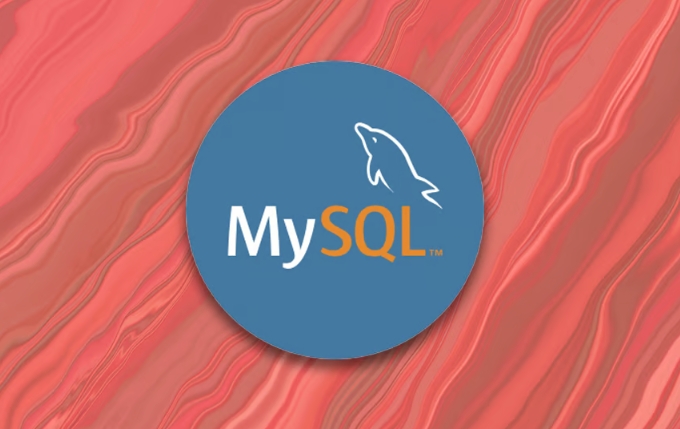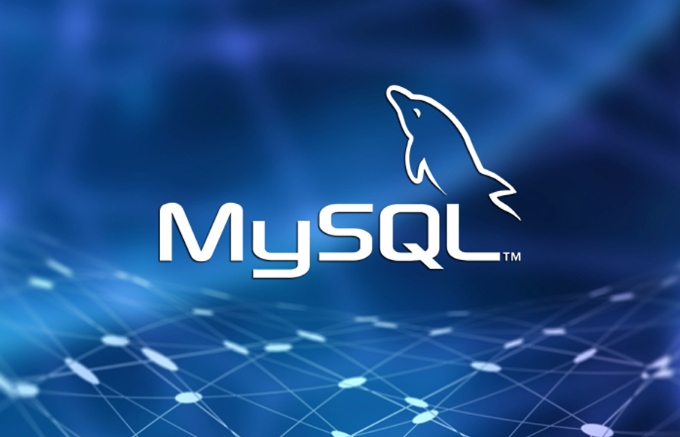 Database
Database
 Mysql Tutorial
Mysql Tutorial
 mysql workbench error code 1045 access denied for user 'root'@'localhost'
mysql workbench error code 1045 access denied for user 'root'@'localhost'
mysql workbench error code 1045 access denied for user 'root'@'localhost'
Jun 26, 2025 pm 12:47 PMError Code: 1045 encountered in MySQL Workbench error, usually caused by password error, permission configuration problems, or user failure; solutions include: 1. Check whether the user name and password are correct. It is recommended to test login through the command line mysql -u root -p; 2. If the password is wrong, you can skip permission verification and reset the password. The specific steps are to stop the service, start with skip-grant-tables, update the password and restart the service; 3. Check whether the 'root'@'localhost' exists, if not, you need to create and authorize it; 4. Troubleshoot other reasons such as whether the service is running, whether the configuration file is abnormal, and whether the authentication plug-in is suitable, such as modifying it to the mysql_native_password plug-in.

I encountered MySQL Workbench error Error Code: 1045. Access denied for user 'root'@'localhost' is a relatively common problem, which usually means that authentication failed when connecting to the database. There may be multiple reasons for this problem, such as password errors, permission configuration issues, and user failure.

Here are some common causes and solutions for you to troubleshoot and deal with:

1. Check whether the username and password are correct
This is the most common reason. If you are sure you are entering the correct password, it may be:
- Password has been modified but you didn't remember it
- There was an error in input (such as incorrect case or extra spaces)
- The default blank password was used, but the password has been actually set
? Suggestions:

- Try to use
mysql -u root -pto log in on the command line to see if you can log in normally. - If it doesn't work, it means there is indeed a problem with the password and you need to reset the root user password.
2. Try to reset the root user password
If you confirm that your password is wrong or you forget your password, you can reset your root password by skipping permission verification.
The steps are as follows (taking Windows as an example):
-
Open a command prompt and stop the MySQL service:
net stop MySQL
Start MySQL with skip permissions:
mysqld --skip-grant-tables
Open another command window and enter MySQL:
mysql -u root
Update the root user password (select statements based on your MySQL version):
-- For MySQL 5.7 and below UPDATE mysql.user SET Password=PASSWORD('New Password') WHERE User='root'; -- For MySQL 8.0 and above ALTER USER 'root'@'localhost' IDENTIFIED BY 'New Password';
Refresh permissions and exit:
FLUSH PRIVILEGES; exit;
Return to the original window, press Ctrl C to end the process of skipping permissions, and then restart the MySQL service:
net start MySQL
3. Check whether the root user exists
Sometimes it may be that the root user was deleted by mistake, or the account was not created for 'root'@'localhost' .
You can log in through the skip permission method mentioned above and execute the following SQL to view user information:
SELECT User, Host FROM mysql.user;
If you don't see the record of 'root'@'localhost' , you need to create it manually:
CREATE USER 'root'@'localhost' IDENTIFIED BY 'Your Password'; GRANT ALL PRIVILEGES ON *.* TO 'root'@'localhost' WITH GRANT OPTION; FLUSH PRIVILEGES;
4. Other possible reasons
- The MySQL service is not running : Make sure the service has started, otherwise the connection will be reported and sometimes it will be displayed as access denied.
- Configuration file error : Check whether there is any content in
my.cnformy.inifile that affects permission settings. - Plugin authentication problem : In some cases, using the
auth_socketplug-in makes it impossible to log in with your password. You can modify it to use themysql_native_passwordplug-in.
For example, modify the plugin method:
ALTER USER 'root'@'localhost' IDENTIFIED WITH mysql_native_password BY 'your password';
Basically, these common situations and solutions. Don’t panic when encountering this error. Start with the simplest password check and gradually troubleshoot permissions and user configuration issues.
The above is the detailed content of mysql workbench error code 1045 access denied for user 'root'@'localhost'. For more information, please follow other related articles on the PHP Chinese website!

Hot AI Tools

Undress AI Tool
Undress images for free

Undresser.AI Undress
AI-powered app for creating realistic nude photos

AI Clothes Remover
Online AI tool for removing clothes from photos.

Clothoff.io
AI clothes remover

Video Face Swap
Swap faces in any video effortlessly with our completely free AI face swap tool!

Hot Article

Hot Tools

Notepad++7.3.1
Easy-to-use and free code editor

SublimeText3 Chinese version
Chinese version, very easy to use

Zend Studio 13.0.1
Powerful PHP integrated development environment

Dreamweaver CS6
Visual web development tools

SublimeText3 Mac version
God-level code editing software (SublimeText3)

Hot Topics
 How to install MySQL 8.0 on Windows/Linux?
Jun 11, 2025 pm 03:25 PM
How to install MySQL 8.0 on Windows/Linux?
Jun 11, 2025 pm 03:25 PM
The key to installing MySQL 8.0 is to follow the steps and pay attention to common problems. It is recommended to use the MSI installation package on Windows. The steps include downloading the installation package, running the installer, selecting the installation type, setting the root password, enabling service startup, and paying attention to port conflicts or manually configuring the ZIP version; Linux (such as Ubuntu) is installed through apt, and the steps are to update the source, installing the server, running security scripts, checking service status, and modifying the root authentication method; no matter which platform, you should modify the default password, create ordinary users, set up firewalls, adjust configuration files to optimize character sets and other parameters to ensure security and normal use.
 How to enable SSL/TLS encryption for MySQL connections?
Jun 11, 2025 pm 03:29 PM
How to enable SSL/TLS encryption for MySQL connections?
Jun 11, 2025 pm 03:29 PM
Enable MySQL's SSL/TLS encryption connection can effectively prevent data leakage. The specific steps are as follows: 1. Confirm that the MySQL version supports SSL, and check whether the return value is YES through SHOWVARIABLESLIKE'have_ssl'; 2. Prepare a PEM format certificate file (ca.pem, server-cert.pem, server-key.pem), which can be generated through OpenSSL or obtained from CA; 3. Modify the MySQL configuration file, add ssl-ca, ssl-cert and ssl-key paths in the [mysqld] section and restart the service; 4. Force the client to use SSL, and use CREATEUSER
 What is the default username and password for MySQL?
Jun 13, 2025 am 12:34 AM
What is the default username and password for MySQL?
Jun 13, 2025 am 12:34 AM
The default user name of MySQL is usually 'root', but the password varies according to the installation environment; in some Linux distributions, the root account may be authenticated by auth_socket plug-in and cannot log in with the password; when installing tools such as XAMPP or WAMP under Windows, root users usually have no password or use common passwords such as root, mysql, etc.; if you forget the password, you can reset it by stopping the MySQL service, starting in --skip-grant-tables mode, updating the mysql.user table to set a new password and restarting the service; note that the MySQL8.0 version requires additional authentication plug-ins.
 What is the MySQL binary log (binlog) and what is it used for?
Jun 11, 2025 pm 03:41 PM
What is the MySQL binary log (binlog) and what is it used for?
Jun 11, 2025 pm 03:41 PM
MySQL's binary log (binlog) is a binary log that records database change operations, and is used in scenarios such as data recovery, master-slave replication and auditing. 1. Binlog is a logical log file that records all operation events that modify data, such as INSERT, UPDATE, DELETE, etc., but does not include SELECT or SHOW query statements; 2. Its main uses include: data recovery through replay logs, supporting master-slave copying to achieve data synchronization, and used to analyze operation records to meet audit requirements; 3. Enable binlog requires setting log-bin, server-id, binlog_format and expire_logs_day in the configuration file.
 How to change or reset the MySQL root user password?
Jun 13, 2025 am 12:33 AM
How to change or reset the MySQL root user password?
Jun 13, 2025 am 12:33 AM
There are three ways to modify or reset MySQLroot user password: 1. Use the ALTERUSER command to modify existing passwords, and execute the corresponding statement after logging in; 2. If you forget your password, you need to stop the service and start it in --skip-grant-tables mode before modifying; 3. The mysqladmin command can be used to modify it directly by modifying it. Each method is suitable for different scenarios and the operation sequence must not be messed up. After the modification is completed, verification must be made and permission protection must be paid attention to.
 What is GTID (Global Transaction Identifier) and what are its advantages?
Jun 19, 2025 am 01:03 AM
What is GTID (Global Transaction Identifier) and what are its advantages?
Jun 19, 2025 am 01:03 AM
GTID (Global Transaction Identifier) ??solves the complexity of replication and failover in MySQL databases by assigning a unique identity to each transaction. 1. It simplifies replication management, automatically handles log files and locations, allowing slave servers to request transactions based on the last executed GTID. 2. Ensure consistency across servers, ensure that each transaction is applied only once on each server, and avoid data inconsistency. 3. Improve troubleshooting efficiency. GTID includes server UUID and serial number, which is convenient for tracking transaction flow and accurately locate problems. These three core advantages make MySQL replication more robust and easy to manage, significantly improving system reliability and data integrity.
 What is a typical process for MySQL master failover?
Jun 19, 2025 am 01:06 AM
What is a typical process for MySQL master failover?
Jun 19, 2025 am 01:06 AM
MySQL main library failover mainly includes four steps. 1. Fault detection: Regularly check the main library process, connection status and simple query to determine whether it is downtime, set up a retry mechanism to avoid misjudgment, and can use tools such as MHA, Orchestrator or Keepalived to assist in detection; 2. Select the new main library: select the most suitable slave library to replace it according to the data synchronization progress (Seconds_Behind_Master), binlog data integrity, network delay and load conditions, and perform data compensation or manual intervention if necessary; 3. Switch topology: Point other slave libraries to the new master library, execute RESETMASTER or enable GTID, update the VIP, DNS or proxy configuration to
 How to alter a large table without locking it (Online DDL)?
Jun 14, 2025 am 12:36 AM
How to alter a large table without locking it (Online DDL)?
Jun 14, 2025 am 12:36 AM
Toalteralargeproductiontablewithoutlonglocks,useonlineDDLtechniques.1)IdentifyifyourALTERoperationisfast(e.g.,adding/droppingcolumns,modifyingNULL/NOTNULL)orslow(e.g.,changingdatatypes,reorderingcolumns,addingindexesonlargedata).2)Usedatabase-specifi





